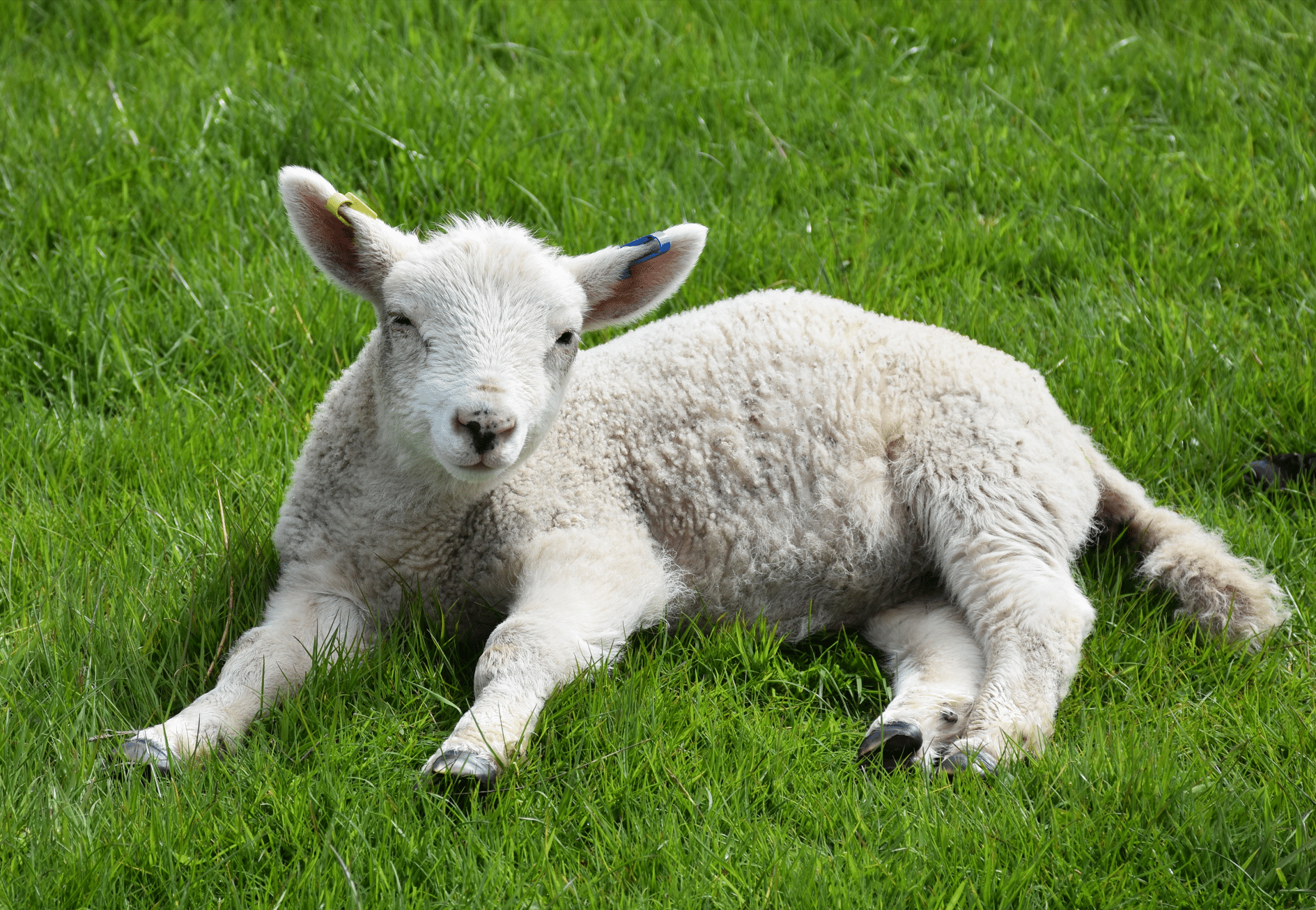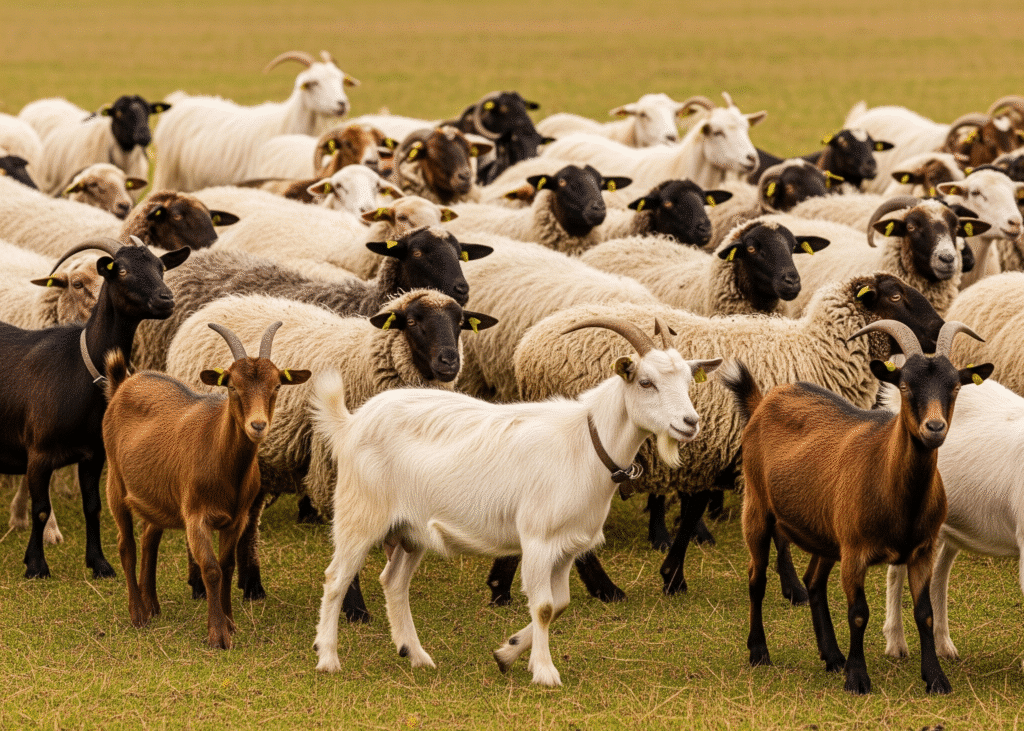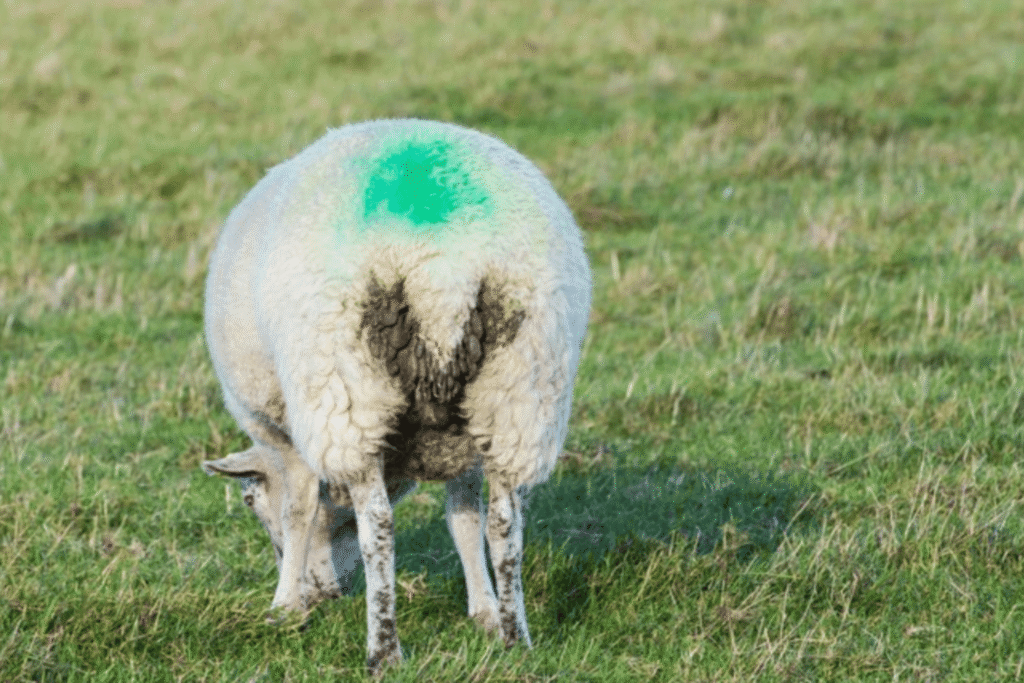Lamb bloating, also known as ruminal tympany, is a condition in which gas builds up in the rumen and cannot be released, leading to swelling of the abdomen and discomfort. It is a serious and often sudden condition that can lead to rapid death if not treated immediately. The issue is typically condition where the rumen (the first stomach compartment) becomes overfilled with gas, causing swelling (distension) of the left side of the abdomen. Bloating arises in young or orphan lambs fed with milk replacer, where harmful bacteria in the stomach ferment milk sugars, producing gas that cannot escape. This gas buildup causes the lamb to become bloated, leading to abdominal swelling, pain, and lethargy. Without prompt intervention, the pressure from the trapped gas can compress vital organs, making bloating in lambs a life-threatening emergency.
Type of Bloating in Lambs
There are two main types of bloat lamb may experience: abomasal bloat and frothy bloat. Abomasal bloat is more commonly seen in artificially reared lambs and is often triggered by factors such as hot milk, overfeeding, or unsanitary feeding equipment.
Frothy bloat is a type of ruminal bloat where gas is trapped in a stable foam inside the rumen. The lamb cannot burp (eructate) to release the gas, which causes the rumen to expand and the abdomen (especially the left side) to swell. This can become life-threatening very quickly if not treated.
In both forms, recognizing early signs like belly distension, teeth grinding, or signs of colic is crucial. Understanding what causes lamb bloating, how to prevent it, and what actions to take when it occurs can mean the difference between life and death for your lambs.
Causes of Lamb Bloating
Lamb bloating is caused by the rapid multiplication of harmful bacteria in the lamb’s stomach (abomasum). These bacteria feed on lactose, the natural sugar found in milk and produce gas as a byproduct. When lambs consume large volumes of milk in fewer feeds—as is common with bottle-feeding—this creates the ideal environment for bacteria to thrive. The resulting gas builds up in the stomach, causing the lamb to become bloated. Unlike lambs reared on the ewe, who feed little and often throughout the day, bottle-fed lambs often receive bigger, less frequent meals, increasing the risk of bloating in lambs.
Other contributing factors include feeding milk that is too hot, unhygienic feeding equipment, or incorrect milk concentration. While abomasal bloat is most common, bloat lambs may also suffer from frothy bloat or other gastrointestinal issues such as intestinal twists, constipation, or infections. These underlying conditions can also result in similar symptoms and should be evaluated by a veterinarian. Early detection and proper feeding practices are key to preventing lamb bloating and avoiding sudden and fatal outcomes.
Symptoms of Bloat in Lambs
Common signs of bloating in lamb include teeth grinding (a sign of abdominal pain), vocalizing, restlessness, and signs of colic. In severe cases, the lamb may collapse, struggle to breathe, or die suddenly with little warning. Recognizing the signs of bloat in lambs early can be lifesaving. A lamb bloated from gas buildup will often show a swollen, tight abdomen—especially on the left side. They may appear dull, lethargic, and reluctant to move.
Bloating often sets in rapidly, sometimes within 30 minutes after feeding—making it critical to monitor lambs closely after meals. If you notice any unusual behavior or bloating symptoms, act immediately. Left untreated, lamb bloating can lead to internal pressure on vital organs, causing severe pain and rapid death. Whether it’s abomasal or frothy bloat, fast intervention from a vet is essential to give your lamb the best chance of survival.
Treatment for Bloat in Lambs
Treating bloat in lamb requires immediate action, especially in severe or sudden cases. If a lamb is bloated, contact your vet as soon as possible—lamb bloating can quickly become life-threatening.
In early stages or mild cases of treariting bloating by baking soda is possible. Take Baking soda solution (about 10ml of water with as much baking soda as possible dissolved in it) orally using a syringe. This can help neutralize stomach acid and reduce gas. Another home remedy for mild lamb bloating is powdered ginger mixed with warm water, which may ease gastrointestinal discomfort due to its natural anti-inflammatory properties.
In more serious situations, veterinary intervention is essential. A vet may attempt to relieve the gas by carefully inserting a needle into the abomasum under local anesthesia to deflate the bloated stomach. Pain relief medications can also be administered to reduce suffering during treatment. Bloat in lambs, regardless of its severity, must be regarded as an emergency and addressed under veterinary supervision.
Prevention of Bloating in Lambs
- Maintain strict hygiene
- Always clean bottles, teats, buckets, and feeders thoroughly.
- Regularly sanitize automatic feeders to reduce bacterial contamination.
- Feed appropriate milk and amounts
- Use only lamb-specific milk replacer (not calf milk, which contains higher lactose).
- Never overfeed; follow the lamb’s individual needs, not just the milk packet instructions.
- Feed small, frequent meals (10–15% of body weight, split into multiple daily feeds).
- Control milk temperature and preparation
- Feed milk at body temperature (38–40°C) or room temperature if using yoghurtised milk.
- Never overheat or reheat milk; discard leftovers to avoid bacterial growth.
- Always check milk temperature on your wrist—it should feel warm, not hot.
- Use proper feeding equipment
- Use hard teats with small holes to slow down milk flow.
- Ensure the teat drips when held at a 45-degree angle, not a steady flow.
- Replace cracked or worn teats promptly.
- Introduce probiotics and yoghurt
- Add quality probiotic supplements (like Bio-support) to help maintain gut health.
- Yoghurtise milk correctly by fermenting it with probiotic yoghurt powder (not just adding yoghurt at feeding).
- Start feeding yoghurtised milk only after 7 days of age, and keep refrigerating once prepared.
- Support gut development
- Ensure orphan lambs receive high-quality colostrum within the first 24 hours.
- Offer creep feed from 5 days old to encourage stomach transition to solid food.
- Wean lambs at 35 days if they’re consuming at least 250g of concentrate per day.
- Avoid sudden changes
- Do not switch milk brands abruptly—transition gradually (¼ new milk to ¾ current, etc.).
- Consider veterinary prevention
- Vaccinate with COVEXIN 10 from 2 weeks of age to help cover harmful bacteria.
- For persistent cases, consult your vet—products like Spray-Fo may aid digestion by moving milk through the stomach faster.
- Mimic natural feeding behavior
- Use self-feeding systems when possible, allowing lambs to drink little and often, like they would from their mothers.
FAQs: Bloat in Lambs and Sheep
What is bloating in lambs?
Bloat in lambs refers to the abnormal buildup of gas in the digestive tract, most commonly in the abomasum (stomach) or rumen. This occurs when gas from fermentation cannot escape, leading to swelling, discomfort, and potential death if not treated promptly. Bloat can be caused by excess lactose fermentation, bad bacteria, or improper feeding techniques in orphan or bottle-fed lambs.
How to prevent bloat in lambs?
Preventing lamb bloating involves careful management of feeding, hygiene, and gut health:
- Use lamb-specific milk replacer (not calf milk, which contains more lactose).
- Feed small, frequent meals rather than large, spaced-out feedings.
- Maintain strict hygiene—clean and disinfect bottles, teats, and buckets daily.
- Add probiotics or yoghurtised milk to help establish healthy gut bacteria.
- Feed milk at body temperature (38–40°C), and never reheat leftover milk.
- Use hard teats with small holes to slow down milk intake.
- Wean at 35 days if the lamb is consuming adequate solid feed (250g/day).
How do you prevent bloat in sheep and goats?
For older sheep and goats, especially on high-protein or lush pastures, prevention focuses on slowing fermentation and gas production:
- Introduce fiber-rich feeds to slow digestion and reduce foaming.
- Use anti-foaming agents (e.g., alcohol ethoxylate-based products) in feed for frothy bloat.
- Avoid sudden diet changes and gradually introduce legume-rich forages.
- Provide free-choice baking soda or a commercial buffer to support rumen pH balance.
- Encourage frequent eating in small amounts to maintain regular fermentation.
How to treat bloating in lambs?
Lamb bloat should be treated as a medical emergency. Key steps include:
- Contact a veterinarian immediately—especially in severe or rapidly progressing cases.
- Administer baking soda: Dissolve ½ teaspoon in 10 ml of warm water and give orally via syringe to neutralize acid.
- For mild cases, powdered ginger mixed with warm water may help ease gas.
- In emergency cases, a vet may use a needle or catheter to relieve gas (with local anesthetic).
- Pain relievers and fluids may also be administered under vet supervision.
- Veterinary diagnosis may include ultrasound or x-ray to rule out other causes like torsions or blockages.
Is bloat a deadly disease in lambs?
Yes. Bloat in lambs can be fatal if not identified and treated quickly. In some cases, death can occur within 30 minutes of a large milk feed due to gas compressing internal organs, causing shock or suffocation. Fast action, proper feeding practices, and vet care can make the difference between life and death.
What is the medicine for bloat in sheep?
Several over-the-counter and veterinary medications can treat bloat in sheep, such as:
- Durvet Bloat Treatment (used for cattle, sheep, and goats) – helps break down foam and gas quickly.
- Simethicone or poloxalene – anti-foaming agents for frothy bloat.
- Prescription anti-inflammatory and pain medications may also be needed.
- Always consult a veterinarian before administering any treatment.
Can baking soda reduce bloating?
Yes, baking soda (sodium bicarbonate) is commonly used in livestock to neutralize stomach acids and help with gas relief. For lambs, dissolve ½ teaspoon in water and administer orally. However, always consult a vet first, especially for severe bloating. Free-choice baking soda is also used in sheep and goats to support rumen function.
How much baking soda to give a bloated calf or lamb?
For calves, the typical dose is 100–150 grams of baking soda dissolved in water, given by drenching. For lambs, a much smaller amount is used—usually ½ to 1 teaspoon in 10 ml of warm water. Overdosing can cause other issues, so always follow veterinary guidance.



